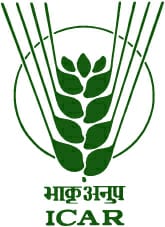Division of Plant Biotechnology, ICAR-IIPR
(Plant Biotechnology and Molecular biology)
Thrust Areas
Gene discovery and genetic engineering for pulses improvement
- Identification and characterization of genes for stress tolerance and anti-nutrient factors in pulses
- Development of multi-gene constructs using insecticidal genes with pod specific promoter and their validation
- Development of high frequency transformation systems in grasspea and Vigna crops
- Development of transgenics for insect tolerance
- Genome editing for enhanced yields and reduced anti nutrients
- Establishment of Rapid generation advancement systems for pulses
Genomics enabled improvement of pulses
- Structural and functional genomics in pulses
- Mapping and tagging of QTLs and genes for biotic (sterility mosaic disease, yellow mosaic disease, Fusarium wilt) and abiotic ( drought, salinity, terminal heat stress, photo/ thermo insensitivity)stresses
- Genome-wide analysis and characterization of important gene families using transcriptomic and proteomic approaches
- Marker assisted introgression for stress tolerance
- Development of genetic and genomic resources for pulses improvement
Significant Acheivements
- Developed a marker assisted backcross (MABC) Chickpea line IPC (L4-14) for enhanced drought tolerance having QTL-hotspot region in DCP92-3 genetic background with 14.2% yield advantage under drought condition.
- Generated high-density linkage map in Chickpea using Axiom®CicerSNP Array (1856 SNPs) spanning a distance of 1106.3 cM and identified QTL clusters on CaLG03 and CaLG06 harboring major QTLs for yield and yield component traits under salinity stress which harbours candidate genes for salinity tolerance in Chickpea
- Developed gram pod tolerant transgenic chickpea and pigeonpea lines tested for bio efficacy under Confined Field Trials (CFTs). Best selected lines (though found to be hemizygous) are being characterized for site of transgene integration.
- Developed single and Bi-directional Duplex pod specific (mod-msg) promoter (BDDP) vectors having cry genes;
- Developed two vector system using pRI 201AN for nptII and tma 12 gene of interest.
- Developed embryonic axis explant based highly reproducible in-vitro regeneration protocol amenable to Agrobacteriumi>-mediated transformation in two Grasspea varieties viz., Pusa-24 and Mahateora and three Mungbean varieties viz. ML267, Samrat and Virat.
- In-vitro regeneration system based on direct shoot organogenesis in Fieldpea, Chickpea and Pigeonpea.
- Cloned and characterized insect resistance gene Vip3Aa for insect resistance (IR) trait in chickpea
- Developed rapid and efficient method for reverse genetic studies in chickpea based on Agrobacterium rhizogenes
- Developed generation of CRISPR/Cas9 construct using InFusion Technology
- Cloned and characterised Chickpea multi-stress responsive WRKY transcription factor and herbivory-inducible chitinase (Car_Chit-15) genes, Pigeonpea Bowman-Birk protease inhibitor and novel small secreted cysteine rich protein (SSCP-1) genes, and Lathyrus sativus oxalyl-CoA synthetase (LsAAE3) and ODAP biosysnthes genes.
- Draft genome sequencing and protein profiling of potent Bacillus isolates: AK2.IIPR, F1.IIPR, F5.IIPR, F6.IIPR and F8.IIPR has been deciphered, revealing the presence of 28, 19, 26, 26 and 29 insecticidal genes, respectively.
- Genome wide identification of MADS-box, Wound-induced protein (WIP) and chitinase gene families in Chickpea.
- Identified major-effect QTLs for 100-seed weight and plant height in Chickpea explaining up to 59.70% phenotypic variation in a recombinant inbred line (RIL) population developed from ICC 4958 and DCP 92-3.
- Identified the role of cytochrome P450, xyloglucan endotransglucosylase/hydrolase, glutamate dehydrogenase, methyl crotonoyl carboxylase and thaumatin-like genes in herbicide resistance in Chickpea through RNA-seq analysis.
- Established marker trait associations (22 MTAs) in Pigeonpea for 5 ideotypic traits viz., days to initial flowering, days to 50% flowering, days to maturity, plant height, and number of primary branches which explains upto 30.76% phenotypic variation and identified 6 SSRs linked with Fusarium wilt resistance in Pigeonpea.
- Generated refined genome assembly of Fusarium udum with a genome size of 62.23 Mb, spanning 1488 contigs with largest contig size of 452.8 kb
Facilities
- Instrumentation
Thermal cyclers, Real time thermal cyclers, vertical and Horizontal Gel Electrophoresis Units, PhosphoImager, Blotting and Hybridization Systems, 2D electrophoresis, Iso-Electric Focussing (IEF), Nano-Spectrophotometer, ELISA Reader, Centrifuges, Lyophilizer, Micro-projectile Gene Gun System (PDS 1000).
- Plant tissue culture and transformation facility
- Transgenic plant containment facility and establishment unit
- State–of-art insect bioassay facility
- Hydroponicsfacility
Publications
Dr. Khela Ram Soren
- K R Soren, Priyanka Gangwar, R G Chaudhary, and S Datta (2015) Population distribution and genetic relatedness in Indian Fusarium udum isolates based on ribosomal internal transcribe spacer and elongation factor. Journal of Environmental Biology, 36, 1063-1070.
- K R Soren, Ashutosh Yadav, Gaurav Pandey, Priyanka Gangwar, Ashok K Parihar, Abhishek Bohra, Girish P Dixit, Subhojit Datta and N P Singh (2015) EST-SSR analysis provides insights about genetic relatedness, population structure and gene flow in grass pea (Lathyrus sativus), an under researched food-legume crop. Plant Breeding, 134, 338-344.
- Khela Ram Soren, Kishwar Ali and Aruna Tyagi* (2012) Cloning and characterization of a gene encoding novel zinc finger protein transcription factor induced under water deficit stress from rice (Oryza sativa) cv. N-22. Indian Journal of Biochemistry & Biophysics, pp. 36-41
-
Khela
Ram Soren, Kishwar Ali and Aruna Tyagi* (2010)Recent advances in molecular breeding of drought tolerance in rice (Oryza sativa L.) Indian Journal of Biotechnology, pp 233-251 - Jasdeep Chatrath Padaria, Khela Ram Soren and Aqbal Singh (2011)Cystein proteinase like gene has role in symbiotic properties of Mesorhizobium ciceri TAL620. Journal of Eco-friendly Agriculture 6(2):131-136
-
Khela Ram Soren, Jasdeep Chatrath Padaria, and Aqbal Singh (2013)Isolation and characterization of symbiotically defective pyrimidine and amino acid auxotroph of Mesorhizobium ciceri in chickpea.
Journal of Environmental Biology
34(4):793-7. - Mahendar Thudi, Pooran M. GaurA, Lakshmanan Krishnamurthy, Reyazul R. Mir, Himabindu KudapaA, Asnake Fikre , Paul Kimurto, Shailesh Tripathi, Khela R. Soren, Richard Mulwa, Chellapilla Bharadwaj D, Subhojit Datta, Sushil K. Chaturvedi and Rajeev K. Varshney, (2016) Genomics-assisted breeding for drought tolerance in chickpea. Functional Plant Biology, 41(11) 1178-1190.
- Srivastava J, Das A, Soren KR, Chaturvedi SK, Nadarajan N, Datta S ( 2012) Ontogeny of in vitro shoot organogenesis from axillary meristem explants in chickpea ( Cicer arietinum L.).
Journal of Crop Science and Biotechnology
15(3): 53-57. - Patil PG, Byregowda M, Agbagwa IO, Soren KR, Ramachandra R and Shashidhar HE.(2015) Molecular diversity study using SSAP markers in pigeonpea ( Cajanus cajan L. Millsp.)
The Bioscan
10(4): 1915-1920. - Patil P, Datta S, Singh I P, Das A, Soren K R, Kaashyap M, Choudhary A K, Chaturvedi S K and Nadarajan N. (2012) Phylogenetic analysis of pigeonpea ( Cajanus cajan) genotypes using Panzee retrotransposon based SSAP markers.
Indian Journal of Agricultural Sciences
82(12):1016-1021. - Patil P G , Datta S, Agbagwa I O, Singh I P, Soren K R, Das A, Choudhary A K and ChaturvediS K. (2014)Using AFLP-RGA markers to assess genetic diversity among pigeonpea ( Cajanus cajan) genotypes in relation to major diseases.
Acta Botanica Brasilica
28(2):198-205.
Dr. Alok Das
- Thakur S, Singh PK, Das A, Rathour R, Variar M, Prashanthi SK, Singh AK, Singh UD, Chand D, Singh NK, Sharma TR (2015) Extensive Sequence Variation in Rice Blast Resistance Gene Pi54 Makes it Broad Spectrum in Nature. Frontiers in Plant Science6:345. doi: 10.3389/fpls.2015.00345
- Sharma TR, Das A, Thakur S, Devanna N, Singh PK , Jain P, Vijayan J, Kumar S (2015). Oscillating transcriptome during rice-Magnaporthe interaction. Current Issues in Molecular Biology 19:99-120.
- Sharma TR, Das A, Thakur S, Jalali BL (2014) Recent Understanding on Structure, Function and Evolution of Plant Disease Resistance Genes. Proceedings of the Indian National Science Academy 80 (1): 83-93
- Das A, Kumar S, Nandeesha P, Yadav IS, Saini J, Datta S (2013) An efficient in vitro regeneration system of fieldpea (Pisum sativum L.) via. shoot organogenesis.Journal of Plant Biochemistry and Biotechnology(DOI: 10.1007/s13562-013-0200-3).
- Das A, Parida SK (2013) Advances in biotechnological applications in three important food legumes Plant Biotechnology Reports (DOI:10.1007/s11816-013-0299-7).
- KumariA, Das A, Devanna BN, Thakur S, Singh P K, Upreti, H C, Singh NK, Sharma TR (2013) Mining of Rice Blast Resistance Gene Pi54 shows effect of single nucleotide polymorphism on phenotypic expression of alleles.European Journal of Plant Pathology137 (1): 55-65.
- Das A, Soubam D, Thakur S, Singh P K, Singh N K and Sharma T R (2012) A novel blast resistance gene, Pi54rh cloned from wild species of rice, Oryza rhizomatis confers broad spectrum resistance to Magnaporthe oryzae.Functional and Integrative Genomics12: 215–228.
- Patil P, Datta S, Singh IP, Das A, Soren KR et al. (2012) Phylogenetic analysis of pigeonpea (Cajanus cajan L.) genotypes using Panzee retro-transposon based SSAP markers. Indian Journal of Agricultural Sciences82(11): 1016-21.
- Srivastava J, Das A, Soren KR, Chaturvedi SK, Nadarajan N, Datta S (2012) Ontogeny of in vitro shoot organogenesis from axillary meristem explants in chickpea (Cicer arietinum L.). Journal of Crop Science and Biotechnology 15(3): 53-57.
- Sharma TR, Das A, Kumar SP, Lodha ML (2009) Resistance Gene Analogues as a Tool for Rapid Identification and Cloning of Disease Resistance genes in Plants. Journal of Plant Biochemistry and Biotechnology 18(1): 1-11.
Research Projects
Externally funded Projects:
|
Development of pod borer resistant transgenic in pigeonpea and chickpea. |
NASF |
Dr. N.P. Singh |
|
Transgenic in chickpea and Pigeonpea for pod borer resistance |
NPTC (ICAR) |
Dr. Alok Das |
|
Functional genomics in chickpea |
NPTC (ICAR) |
Dr. K.R. Soren |
|
Utilizing chickpea genome sequence for crop improvement. |
DAC-ICARDA-ICAR |
Dr. K.R. Soren |
|
Incentivizing in agricultural research |
ICAR |
Dr.K.R.Soren |
Institute Projects:
|
Marker assisted gene introgression for pod borer resistance and drought tolerance in elite chickpea. |
ICAR |
Dr.K.R.Soren |
|
Genetic engineering for development of pod borer resistance chickpea using multi-gene approach. |
ICAR |
Mr.K.Aravind Kumar |
|
Molecular dissection of response to terminal heat in chickpea |
ICAR |
Mr.P.S.Shanmugavadivel |
|
Prospecting alleles for enhanced drought tolerance in chickpea and pigeonpea |
ICAR |
Dr. Alok Das |



Plant Tissue Culture facility


Plant Tissue Culture facility

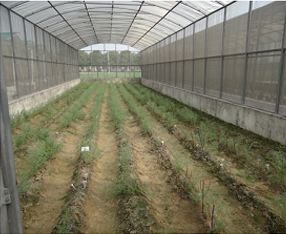
Plant Tissue Culture facility
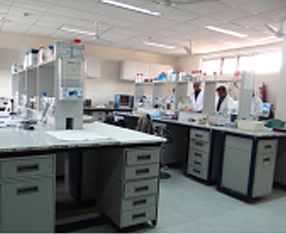
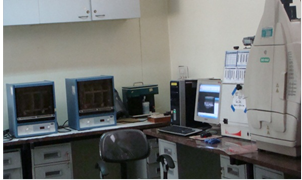
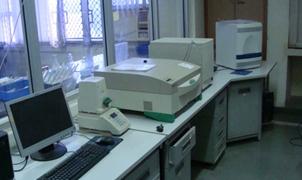
Plant Tissue Culture facility
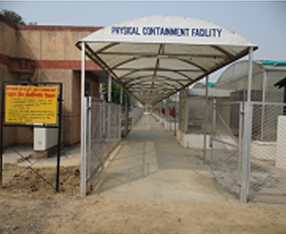
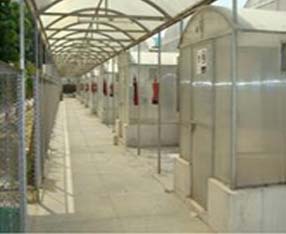
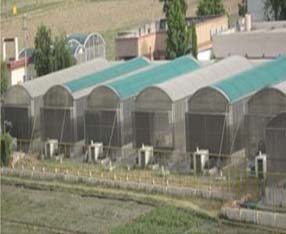
Plant Tissue Culture facility
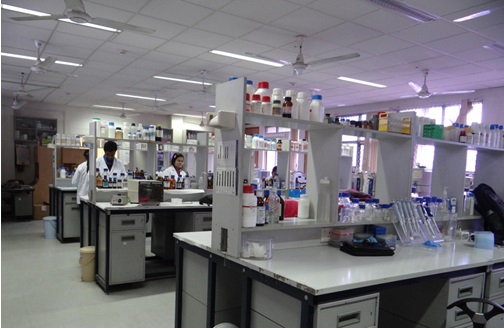
Plant Tissue Culture facility
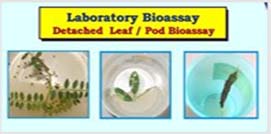
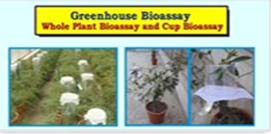
Plant Tissue Culture facility
Glimpses of Biotechnology Laboratory and Facilites
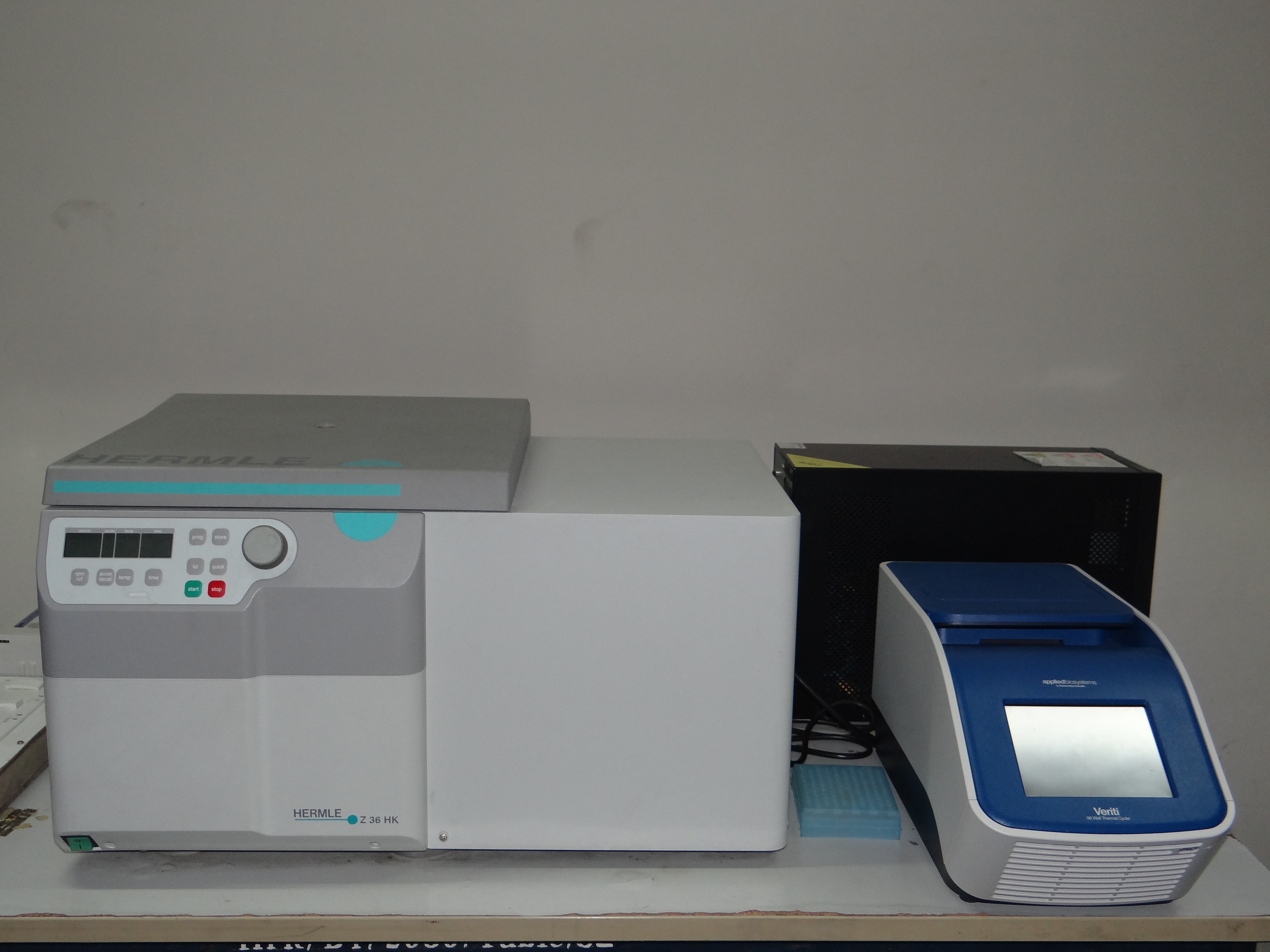
Centrifuge Machine
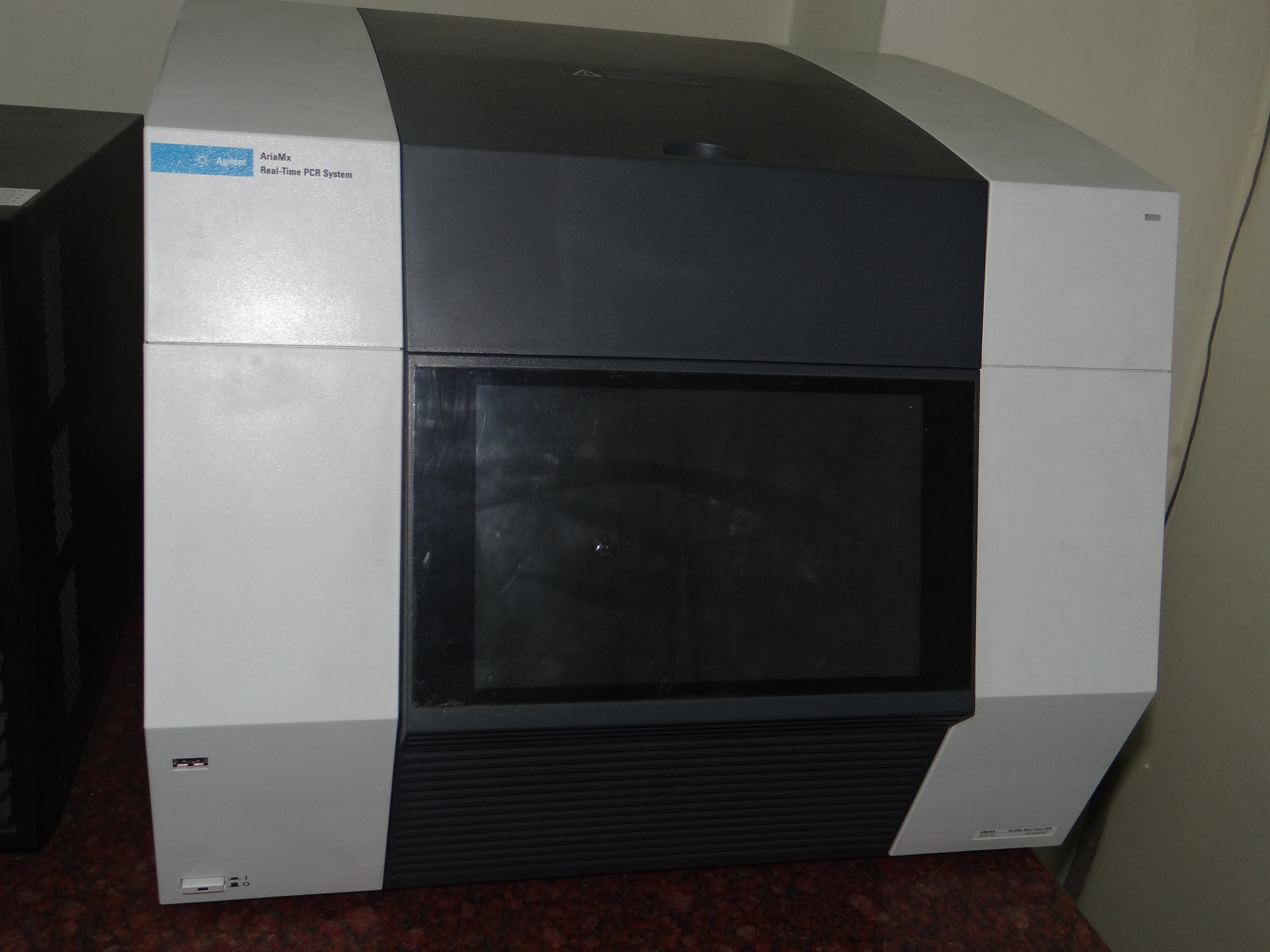
Real Time Thermal Cycler Machine
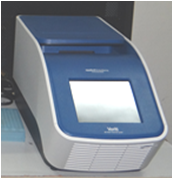
Thermal Cycler (PCR) Machine 1
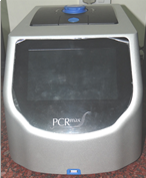
Thermal Cycler (PCR) Machine 2
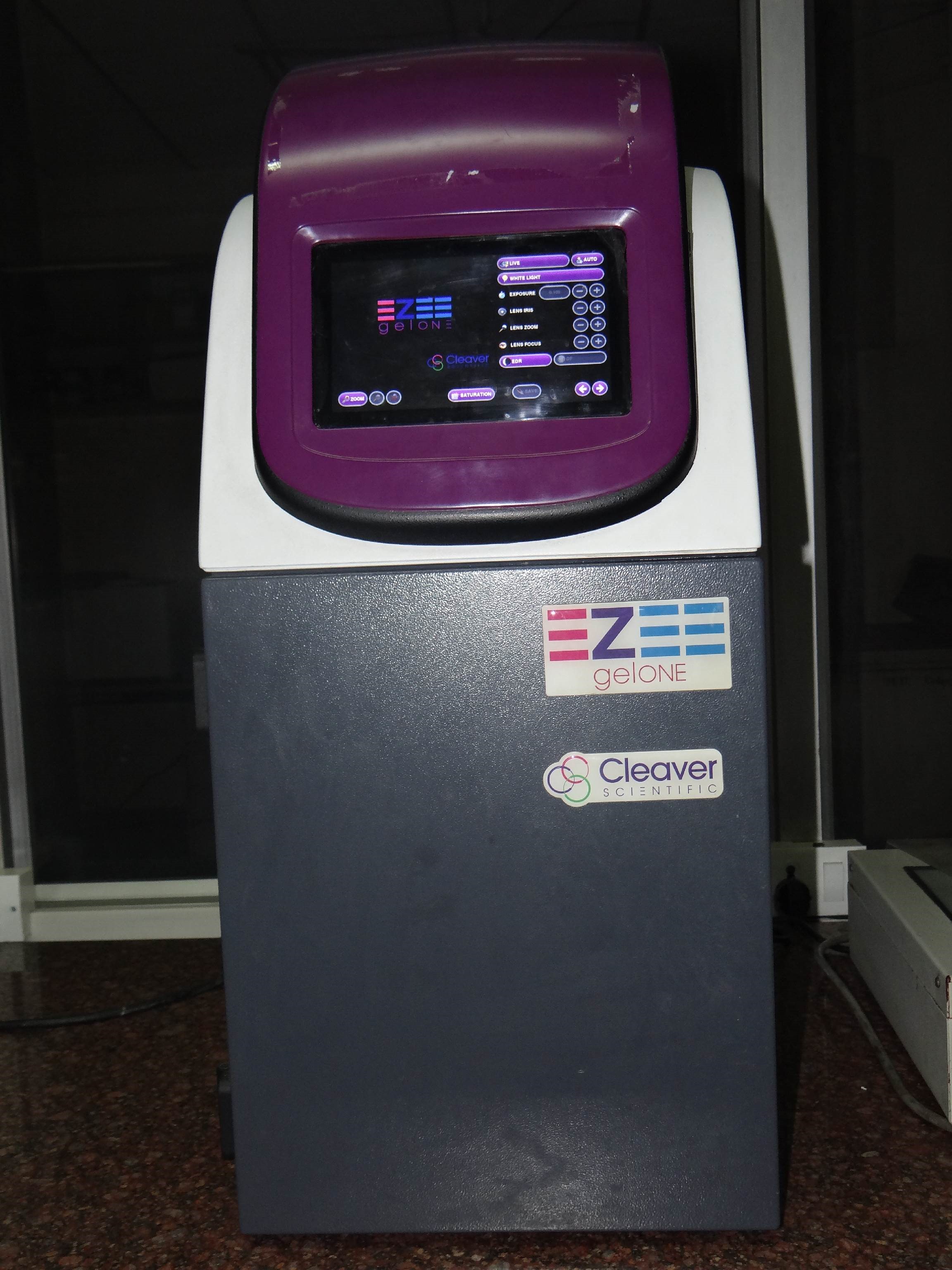
Gel Doc
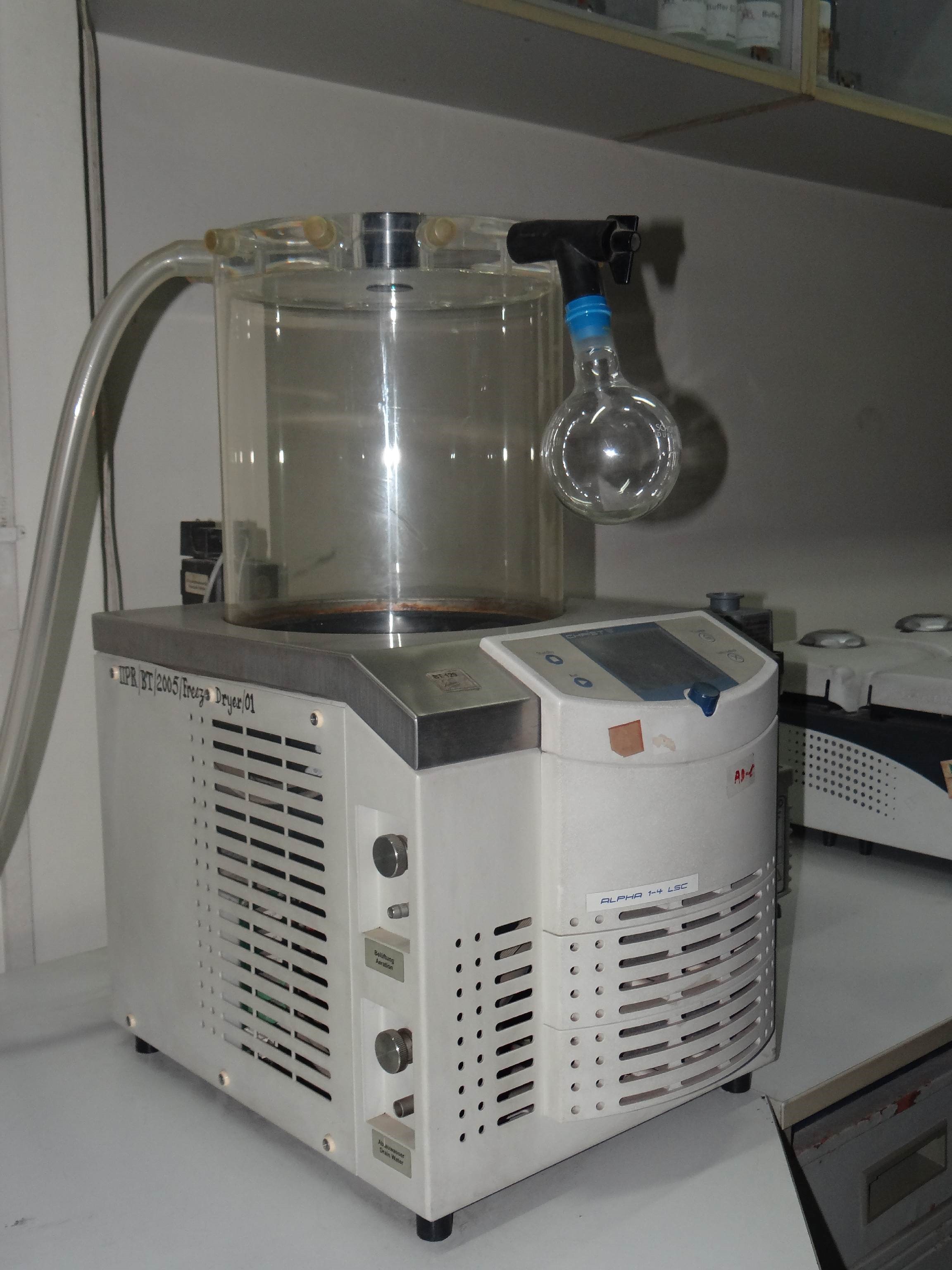
Freeze Dryer/Lyophilizer
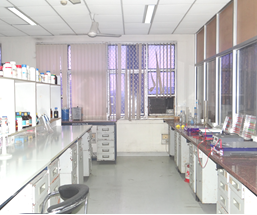
Laboratory
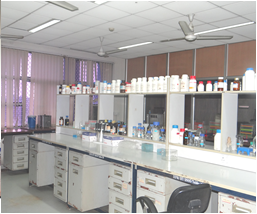
Laboratory

